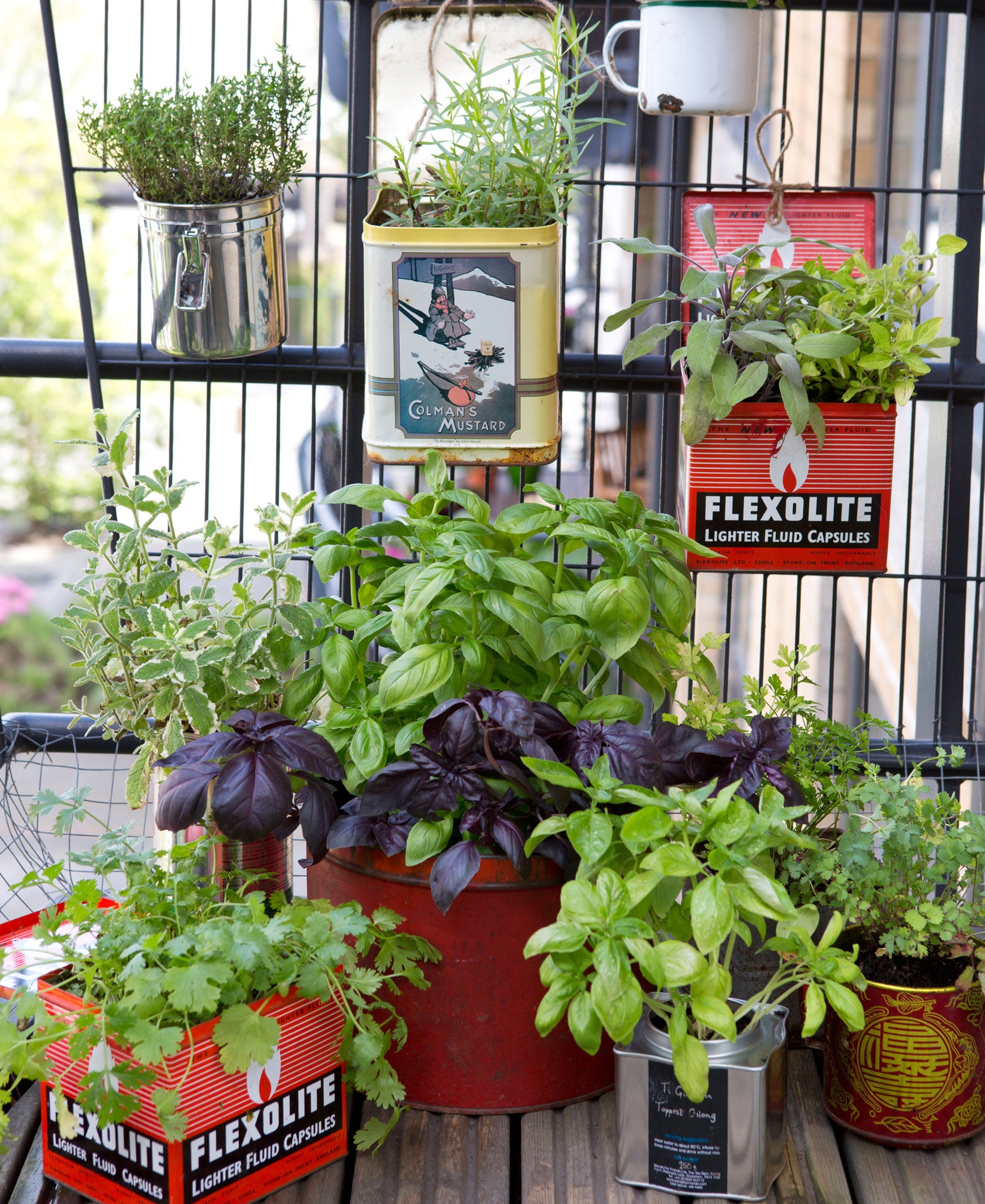Emma Townshend: 'Nothing to plant seeds in? A new book offers some ingenious ideas...'
Alex Mitchell's new book Gardening on a Shoestring offers a delectable range of ways to create a garden on a budget

There's no denying that gardening is a potentially costly hobby to start getting into. Spend 20 minutes covetously flicking through pictures of what you fancy in a seed catalogue and you'll see what I mean. It's not just the plants, either: the containers in which you grow them can be shockingly pricey, too – especially when you're buying a few at once.
With that in mind, I spoke to Alex Mitchell, whose new book Gardening on a Shoestring (£16.99, Kyle Books) offers a delectable range of ways to create a garden on a budget. I'm asking her about her container ideas, given that we're rapidly approaching that spring moment when pots become a fast-changing parade of entertainment in the garden.
Hers are cheap and new, yet they look expensively old. "Look," she laughs, "you can spend 300 quid on an antique pot – or you can spend £40 and do this," she says, pointing at a row of clay pots that she has "aged".
"I experimented with a lot of ways of doing it," she explains of the process. "Most writers recommend painting yoghurt on the pot. But if you just do that, first of all a horrible slimy mould grows. It's actually hairy. Then it goes green, which isn't a good look. What you want is to mimic minerals leaching out – more sun-baked patio than dank corner. So I worked out a way to do it by painting it with baking powder, then fixing it with hairspray. And I like that those are things you have in your own cupboards."
Alex Mitchell strikes me as almost constitutionally enthusiastic about saving her fellow gardeners money. But that risks making her sound tight, when her interest is actually in our not financially over-committing ourselves to our hobby, or being persuaded that we need more kit than we do.
Next, we move on to polystyrene. Yes, I know, polystyrene. How is this gonna work? "It's a really good material," Mitchell enthuses. "It's mostly free," she says, "and it's very light, so it's very good for [planting seeds on] window sills. And it doesn't slip." Which, usefully, helps it not roll off said window sill on to the head of a passer-by. But most importantly, "in direct weather conditions, it means the roots don't get really hot or really cold".
Ahh! So fish boxes it is. But where to get them from – and free, as she suggests? Mitchell has a solution here, too: "We used an old Christmas lights box, and another one came from the local veg shop. They got used to me – I'd always be turning up and rummaging, going 'Helloooo…'" For some reason this is a scene I enjoy picturing.
But how do you hide the yucky, well, polystyrene-ness of a Christmas light box? The answer is paint. "It needs to be bright," Mitchell reckons. "I tried being tasteful and painting them olive and sage, but it was a lesson that you can't pretend things aren't what they are." Hers are determinedly urban, bright postbox red, and cheerily exuberant in planting.
Her final container suggestion is my favourite: old-fashioned printed tins. "Though it can be hard to get hold of them. If you are the kind of person who has a spare cupboard full of really nice vintage tins, fine – but I don't. So I find them on eBay." Her herb garden, planted in cake, biscuit and tea tins (pictured above), is a thing of sweet, home-made beauty. And for those really on an economy drive, how about washing off your baked-bean tins and using them as shiny metal containers? Mitchell covered her fence in them. "Then I took cuttings from my dad's big 'Lord Bute' Pelargonium, and they flowered that season." Cheap, but very cheerful.
Four ways of saving money on plants
Pelargoniums
"I break off cuttings," says Mitchell. "It takes 10 minutes, no rooting powder, just poke them in John Innes No 2 compost." Water and feed, and they'll flourish.
Herbs
"Buy a pot of chives, say, from the supermarket then divide it into two or even four. Split it carefully, and make sure the plant is warm when you chop it in half."
Salad
"It's the same deal as the herbs with living salad leaves. Split the supermarket version into individual plants for instant cut-and-come-again."
Window-box colour
Geum (also called avens) is a Mitchell favourite for intense red. And Lobelia for a burst of blue. Both are available at good garden centres.
Join our commenting forum
Join thought-provoking conversations, follow other Independent readers and see their replies
Comments